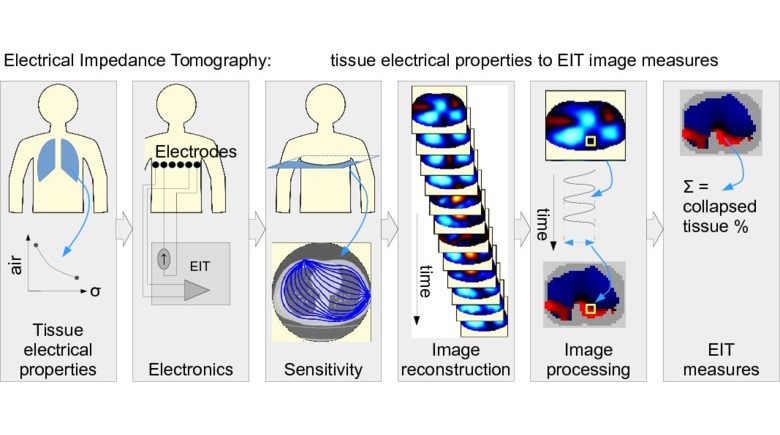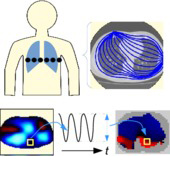
Interpretation of Electrical Impedance Tomography (EIT) -based measures is complex. This review focuses on clarifying the various processes starting from the tissue electrical properties, through to diagnostic EIT measures, in order to support accurate interpretation of EIT results. The image interpretation “pathway” categorizes the steps by which an EIT system creates measures of the tissue properties of interest. An overview is given of areas of EIT application and of our perspectives for research and development.
EIT has the advantage of non-invasiveness and high temporal resolution but suffers from poor spatial resolution and sensitivity to electrode movement and contact quality. EIT can be useful to applications where there are conductive contrasts between tissues, fluids or gasses, such as imaging of cancerous or ischemic tissue or functional monitoring of breathing, blood flow, gastric motility and neural activity. The past decade has seen clinical application and commercial activity using EIT for ventilation monitoring.
In the opinion of the authors, EIT is at a time of transition. For many of its applications, EIT is reliable and reproducible. The important question is whether it is relevant, in the sense that EIT-based measures can be useful to manage patients and improve outcomes. To be successful, EIT must provide new clinically-relevant information which cannot be obtained, safely or conveniently, in another way. We feel the capabilities of EIT mean it is best seen as monitoring++ (i.e. an improved monitoring technology), rather than imaging — (i.e. a low-resolution imaging technology). Using its high temporal resolution, there are rich possibilities to explore novel modalities and to extract specific physiological information.
Further research by the authors may be found at www.sce.carleton.ca/faculty/adler for Andy Adler, and aboyle.ca for Alistair Boyle.

